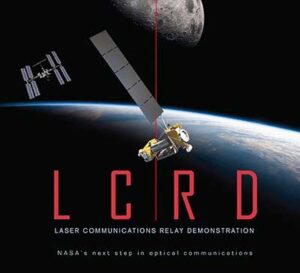What is LCRD?

- LCRD involves laser communications – also called optical communications which uses infrared light to send information.
- LCRD is launched in a geosynchronous orbit, over 35,000km above Earth.
- LCRD has two optical terminals – one to receive data from a user spacecraft, and the other to transmit data to ground stations.
- The modems will translate the digital data into laser signals. This will then be transmitted via encoded beams of light.
Benefits offered by LCRD
- Currently, most NASA spacecraft use radio frequency communications to send data.
- Optical communications will help increase the bandwidth 10 to 100 times more than radio frequency systems.
- The LCRD will help the agency test optical communication in space.
Laser vs Radio
- Laser communications and radio waves use different wavelengths of light. It uses infrared light and has a shorter wavelength than radio waves.
- This will help the transmission of more data in a short time.
- Using infrared lasers, LCRD will send data to Earth at 1.2 gigabits-per-second (Gbps).
- It would take roughly nine weeks to transmit a completed map of Mars back to Earth with current radio frequency systems. With lasers, we can accelerate that to about nine days, says NASA.
Other advantages
Optical communications systems are smaller in size, weight, and require less power compared with radio instruments.
- A smaller size means more room for science instruments.
- Less weight means a less expensive launch.
- Less power means less drain on the spacecraft’s batteries.


 Users Today : 243
Users Today : 243 Total views : 470621
Total views : 470621